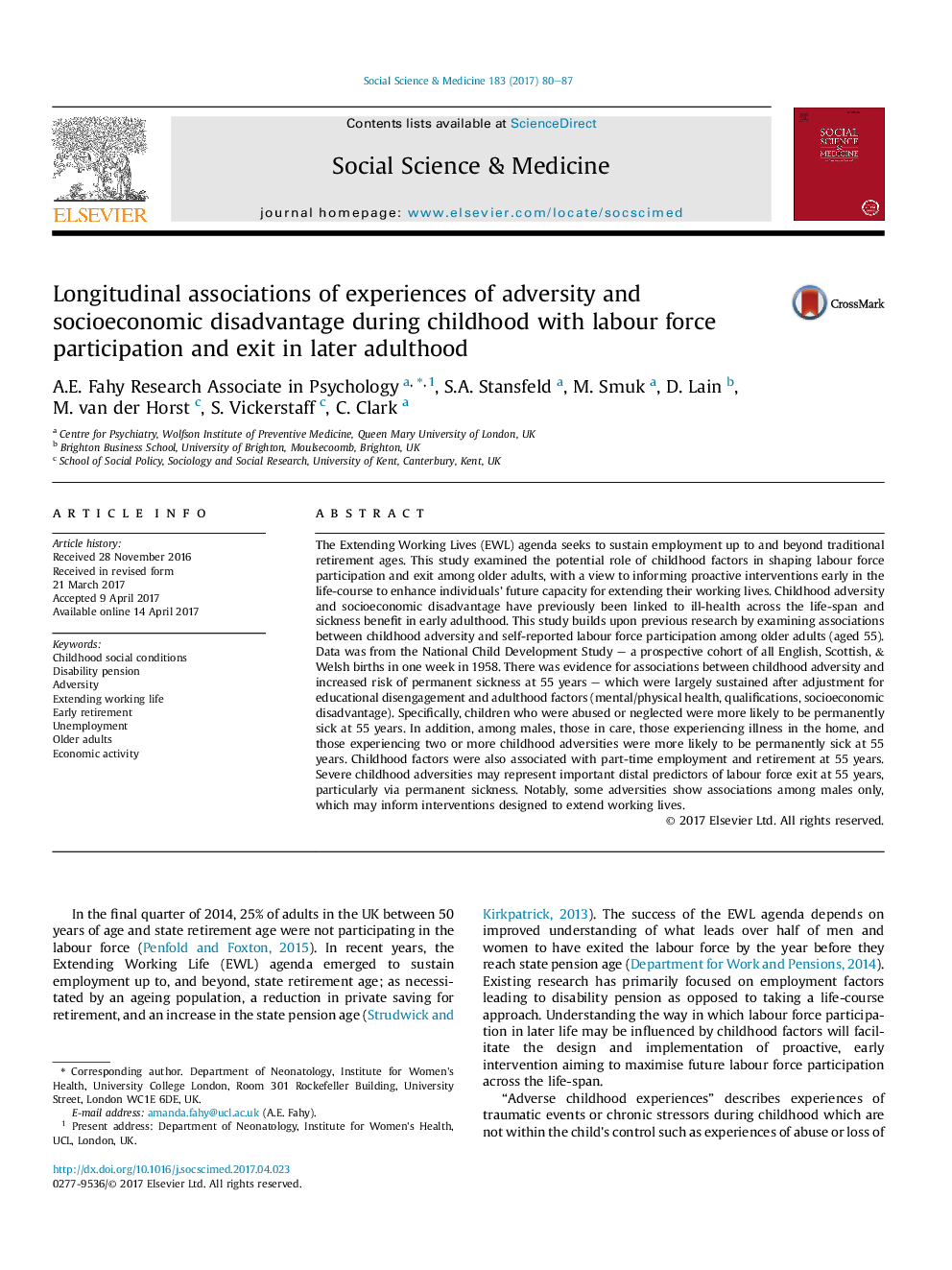| Article ID | Journal | Published Year | Pages | File Type |
|---|---|---|---|---|
| 5046554 | Social Science & Medicine | 2017 | 8 Pages |
â¢Childhood neglect and abuse increase risk of permanent sickness at 55 years.â¢Adversity associated with permanent sickness among males in particular.â¢Effects sustained when adjusted for adult health, qualifications, & social class.â¢Childhood circumstances important to success of extending working lives agenda.â¢Distal predictors of labour force exit may inform proactive EWL interventions.
The Extending Working Lives (EWL) agenda seeks to sustain employment up to and beyond traditional retirement ages. This study examined the potential role of childhood factors in shaping labour force participation and exit among older adults, with a view to informing proactive interventions early in the life-course to enhance individuals' future capacity for extending their working lives. Childhood adversity and socioeconomic disadvantage have previously been linked to ill-health across the life-span and sickness benefit in early adulthood. This study builds upon previous research by examining associations between childhood adversity and self-reported labour force participation among older adults (aged 55). Data was from the National Child Development Study - a prospective cohort of all English, Scottish, & Welsh births in one week in 1958. There was evidence for associations between childhood adversity and increased risk of permanent sickness at 55 years - which were largely sustained after adjustment for educational disengagement and adulthood factors (mental/physical health, qualifications, socioeconomic disadvantage). Specifically, children who were abused or neglected were more likely to be permanently sick at 55 years. In addition, among males, those in care, those experiencing illness in the home, and those experiencing two or more childhood adversities were more likely to be permanently sick at 55 years. Childhood factors were also associated with part-time employment and retirement at 55 years. Severe childhood adversities may represent important distal predictors of labour force exit at 55 years, particularly via permanent sickness. Notably, some adversities show associations among males only, which may inform interventions designed to extend working lives.
